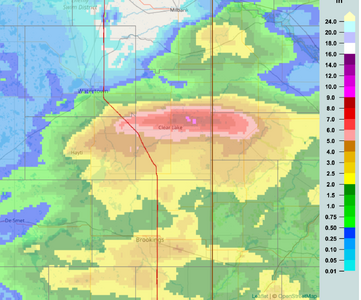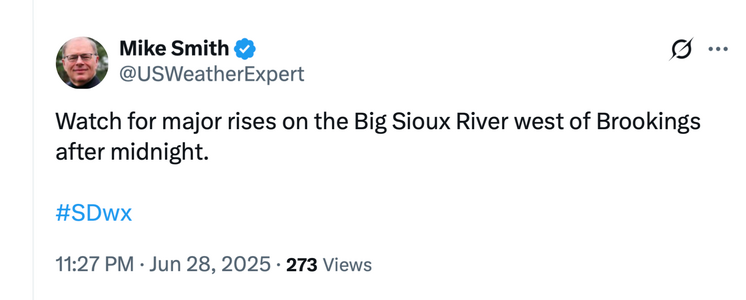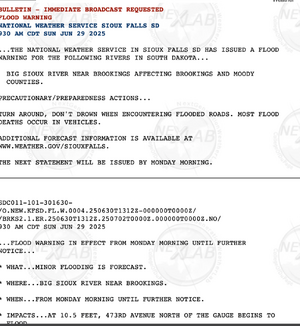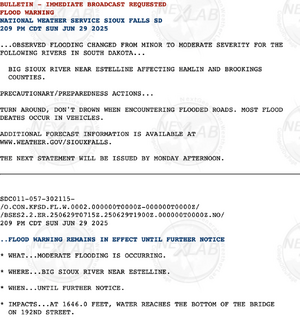but rather the extreme swings between very wet years (the previous two years) and very dry ones (this year, only .03" of rain since Oct 1). This causes a surge in vegetation in the wet years, which then dries out in the dry years, providing fuel for wildfires.
This is a very good point, in wet years all that stuff - grasses/shrubs/weeds/etc can and will put on allot of growth(thats just nature its simply how these plants live). Then in a dry or even a just normal year, all that stuff will dry out and be ripe for burning. It is simply not possible or practical or even possible to go through thousands of acres of forest and "clean out" all that dead vegetation. Individual landowners can/should keep a defensible space around their structures though. (but again its not like a state/county/town can/should be going by every property every dry season on "weed patrol")
They are dropping people in the heartland too.
Its happening in CO too, particularly in the mountains - for one of the same reasons as CA: wildfires. There was an article in the paper back in January about people being dropped by multiple insurance companies, and its now getting hard to even get insurance in some parts of the mountains.
4 homes on a 1 acre lot, and all it takes is one to go and they will all go.
This is in big part due to how close they are built together. Then there's also the factor of even with homes that are spread out the building materials used... like instead of actual lumber there is more & more 'manufactured wood' type products in the structure (the majority of it OSB-based). This stuff not only ignites easier, it burns hotter, and being being a much thinner board it burns up quicker(leading to structural failure/collapse of the building even quicker).
Then you have siding, which has in the past has been sometimes wood or mostly pressed hardboard... both of which will ofcourse burn, but these days its more likely OSB-based which ignites easier than the older pressed hardboard. Though that said, *some* builders are using 'James Hardie' siding which is cement-fiber a based product. It wont burn, but is also not "fireproof" in the sense that it will eventually fall apart if kept in contact with flame, and being just a thin board, heat can transfer through it causing the underlying structure to catch fire. But what it will do is prevent sparks or small embers from igniting the *siding* leading to structure fire. The "downside" to that type of product is its more expensive and harder to work with, so the common "build the thing as cheap as possible" rules it out in some cases.
------------
Honestly other than the very important fire mitigation/defensible spaces/etc.. I think one of the big things that needs to be looked at/reviewed in fire-prone areas (or in general wind-prone areas) is the construction itself...
Maybe its time to update building codes and start getting away from wood and especially OSB-based building materials, and start looking at 'James Hardie' (or similar if it exists) siding (with something other than sheets of OSB behind it, even plywood is better, but ideally if it exists a structurally strong(like OSB/plywood is) non-flammable sheet-good) and steel framing - atleast for the exterior walls.
Same for roofs, thankfully the old (easily ignighted) wood-shake shingles are banned in many areas. The most common asphalt shingles will offer some protection, but they will melt (so sparks are fine, but flaming embers may not be), once its through to the roof decking below - most commonly OSB these days you have an ignition source. And once flames are into the open attic space it'll spread throughout the entire attic quickly. Again here ceramic or cement-fiber roof-tiles/shingles already exist, those coupled with a non-flamable roof-decking underneath *and* structural steel roof trusses all but eliminates this issue.
The only other thing you'd have to look into is some way to protect windows & doors (maybe some sort of metal "shutters" - I think I saw that something like that - basically like a mini roolup metal garage door - already exists & some people do use it for hurricanes)
A home/building constructed in such a way, while not 'fireproof' will stand a significant chance of survival.. *BUT* it won't be cheap! Though the long run - insurance discounts (or simply ability to get insurance) is where it pays for itself. And there's also the factor that if its no longer a specialty/custom thing the construction cost comes down.
A building/construction review like this is probably something that needs to be looked at more on a state basis than federal though?
The type of vegetation involved dries out incredibly fast -- within a few days after even the heaviest rains. That means the dry weather over the months before the fire had nothing to do with the fires.
Yep that stuff: grasses in particular... when already in their dormant(ie: dead/dry) stage, will dry out quickly after a rain - basically as Cliff stated, one hot sunny day is all it takes.
But when in their active(ie: green) stage its going to take a few weeks of dry to go fully dormant and then become dry/cured/ripe for burning, so in that respect dry weather over the months before the fire had something to do with the fire (though that said *drought alone* did not, as said vegetation would still be dry/cured for burning even if it had been a normal dry season there.)
And anyone who has seen dry grass/brush/etc burn in person knows just how volatile that stuff is! It takes *very little* to ignite it, and it will burn/spread quickly.. then if you were to add wind you have something thats basically unstoppable.





